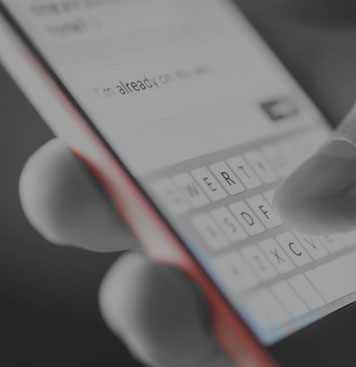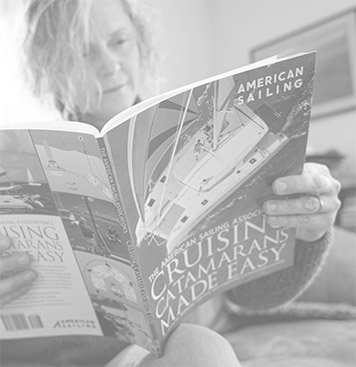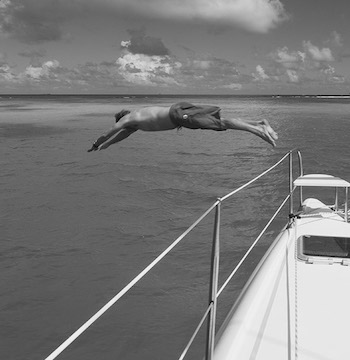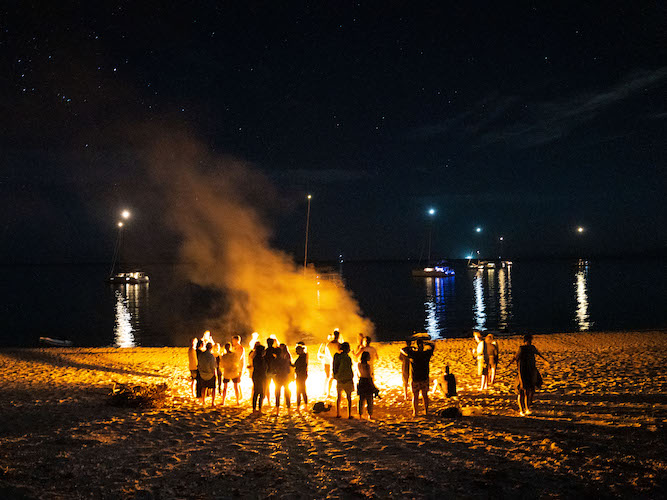Catamaran vs Monohull – Which is Better?
Which is better? A catamaran or a monohull
I’m often asked by my students why one would choose a sailing monohull or a sailing catamaran for their adventures. The simple answer is: There is no simple answer — it depends on a lot of things, perhaps the most important one is your preference. “Yeah, well, this is my first week sailing ever, so how do I have a preference?” Let’s explore the differences and discuss the ins and outs of sailing, chartering, performance, and living aboard either vessel.
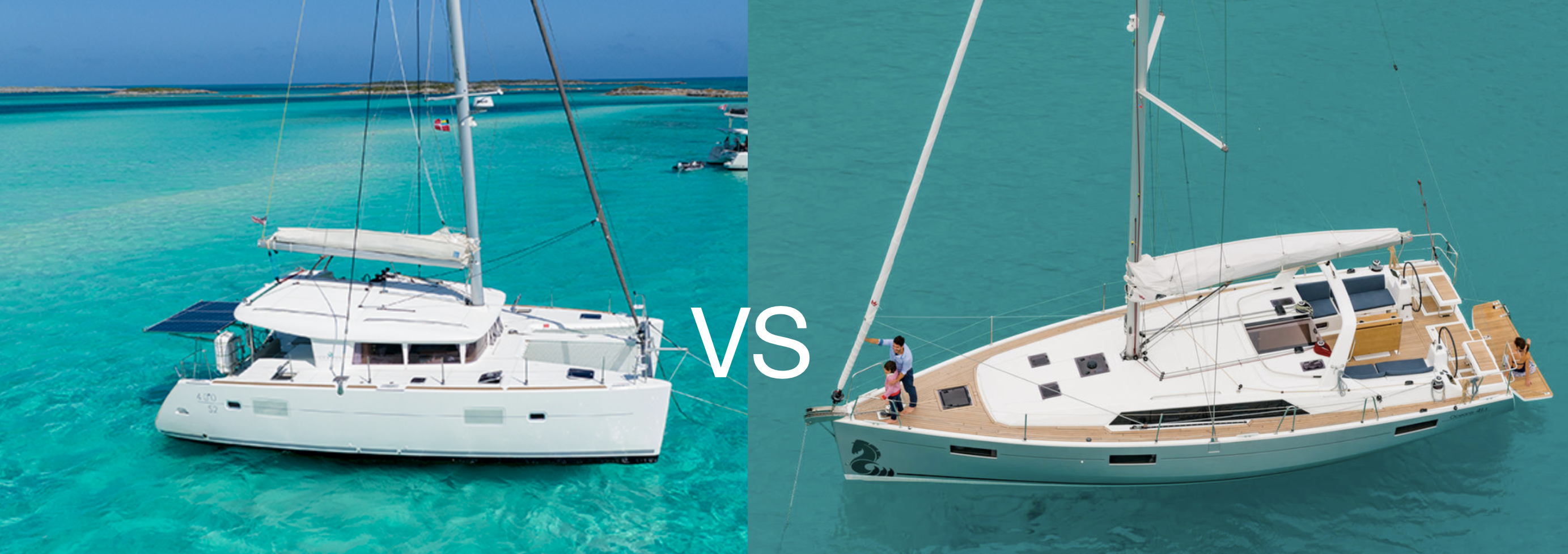
Notice that I don’t say “pros” and “cons” when considering the differences between the two vessels. To some, the gentle rocking of the monohull elicits nostalgia for a bygone youth spent sailing dinghies in the bay. To others, it represents sleepless nights, banging kitchenware, and angry spouses.
Short Summary – Catamaran vs Monohull
Generally, I describe my preference as follows: If I want to invite guests that are not frequently on the water, have less tolerance for “bumpy” nights, or expect a more “luxury” experience (you’ll see why I put it in quotes shortly) then I select a sailing catamaran. There is more room to spread out (vs the same length mono), rocking at anchor/mooring is minimized, and the kids love playing on the trampoline. Or perhaps phrased differently, “If you want to drink from beach to beach…”
DO NOT DRINK ALCOHOL WHILE OPERATING ANY VESSEL. EVER.
If, however, you want to put some miles down sailing from port to port in the Med (or wherever you have variable wind direction), then the mono is probably the better option. It has better upwind performance and costs less in marinas.
Let’s get into the details. We’re going to compare a suitable, common charter catamaran (Lagoon, 40’) with a good, common charter monohull (Beneteau, 41’).
Sailing and Performance
The monohull total tacking angle is about 90-100 degrees apparent wind angle (AWA). This means that the closest close-haul sailing angle achievable is approximately 45-50 degrees off the wind. The comparable catamaran has a total tacking angle of about 110-120 degrees (55-60 degrees AWA off the wind). This loss is due to the extra leeway experienced in the catamaran. This is a significant difference when trying to beat to windward and can mean the difference between sailing the entire distance vs putting the sails up for show only. For those interested in math, the progress into the wind is determined by the cosine of the close haul sailing angle (angle of the wind) times the length of the leg on that tack.
windward distance = cosine(𝜶) x leg length
Where α is the close haul sailing of the vessel. Table 1 compares the windward distance achieved of 3 sailing angles over a leg length of 1 unit (nautical mile, km, etc). For example, if the leg length is 1 nm, and 7 legs are sailed, a total distance of 7 nm is covered. However, the progress to windward is not 7 nm, but
cosine(𝜶) x leg length = cos(45°) x 7 nm = 0.71 x 7 nm = 5.0nm
for a monohull sailing 45° to the wind, and 4.0 nm for a catamaran sailing 55° to the wind. The final difference after 7 tacks each is 1.0 nm, which would take the catamaran an additional 2 tacks (and just shy of 2 nm distance sailed) to make up the difference.
Table 1. Sailing Angle and Distance Comparison
Sailing Angle (off the wind)
Windward Distance Achieved
% loss from 45°
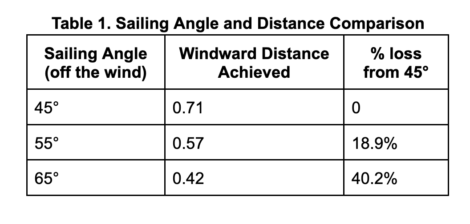
Figure 1. Sailing Angle Mono vs Cat
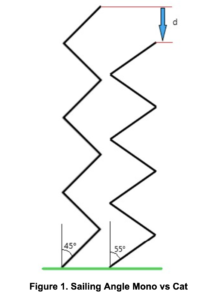
A real-life example
Sailing from Mallorca on a new Lagoon 40. We needed to sail directly upwind in about 20 knots of wind, 3 miles from Cala Mondragó to Cala D’Or. It took over 2 hours and we sailed over 7 nm. As you can see, the tacking angle is far from 90º typical to a monohull.
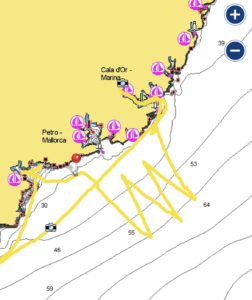
Additionally, the loss to each tack must be considered. Speed and headway is lost with each tack – the mono carries its momentum much better (minimal speed loss) through the tack and has minimal leeway loss compared to the catamaran. The cat loses a tremendous amount of its momentum and experiences significant leeway loss. And it has to take more tacks to make the same windward distance, rendering the loss greater than that just lost to having to sail a greater distance due to the tacking angle.
Daggerboards greatly reduce leeway and give catamarans excellent upwind performance on par with monohulls. There are reasons why all cats don’t just have daggerboards. Especially on charter boats, one mistake, leaving the boards down, in shallow water can destroy the boat.
Across the wind (most reaching situations), the catamaran is faster. Upwind, the mono makes better progress due to the tacking/sailing angle. Downwind is a competition.
Downwind is where catamarans really shine. The stability and smooth ride is no comparison to a monohull. We sailed Never Say Never, our Lagoon 400S2 from Hilton Head SC to Ft Lauderdale, we had a NE wind of 20-25 knots. For us to stay inshore of the Gulf Stream to avoid rough conditions, we were wing-on-wing for over 24 hours, surfing down gently at over 7 knots. We covered over 160 miles in 24 hours. Escorted by dolphins, this was one for the books —non-stop 3-day delivery.
Comfort & Stability
The catamaran doesn’t heel (well, it shouldn’t. I guess if that’s the case we’re having another conversation). No heeling can mean easier walking about while underway: we’re all familiar with walking on level ground; walking with the ground at an angle is a less-common experience. However, there is an oft-missed discussion about the mono’s stability on a heel. Waves tend to roll under the mono’s hull. Once sea legs are found, the motion of the hull on the water is predictable and smooth.
The cat’s motion on waves tends to bounce between two “stable” states: one resting on the starboard hull, the other resting on the port hull. You get a slight, but sudden rock to starboard when the wave passes under the port pontoon, then a sudden return to port as the wave passes under the starboard hull. This tends to be a jarring motion all day. So while some argue that mono heeling is tiring, others will argue that this cat phenomenon is tiring. A sarcastic captain often says:
“One benefit of a cat, you get each wave twice!”
Each vessel has its own quirks for sail trim, so that is a wash. I can read a mono’s sails much easier than a cat’s, but I sailed monos for 20+ years before trying cats so I may be biased.
Catamaran vs Monohull Safety
The mono gives lots of feedback about being overpowered long before it becomes a problem: heel angle and weather helm are the loudest. The cat is much more subtle: mast and boom groans, light windward pontoon, lack of steerability. Experiment with the main traveller position and reefing on a schedule per the owners manual to find the optimum sail configuration on a cat.
When the seas pick up, catamarans do much better downwind. Monohulls tend to roll, yaw and wallow in the troughs and round up on the face of the waves. Catamaran’s tend to surf straight down the waves. A force 7-8 blow can be enjoyable. Stow your main and run with just the jib downwind on a cat and you’ll see the beauty and ease to steer this configuration.
“When the seas pick up, catamarans do much better downwind. Monohull’s tend to roll, yaw and wallow in the troughs”
Chartering and Living Aboard Considerations
Charter cost – cats are 30-60% more expensive than the equivalent mono.
In marinas, the cat rate is usually 50% greater than the mono rate. And, unless you get a reservation long in advance, they might not have room for you.
On moorings, depending on the bow cleat location, the mooring lines can run over or along portions of the hull of the cat. This leads to line stretch-and-relaxation noise all night long. For anyone in the forward cabins, this is a nightmare. Or worse since you can’t even get to sleep to have a nightmare.
Cats tend to have shallower draft and therefore can anchor closer to the beach. If wind and swell are from the same direction, cats tend to weather it better at anchor. Due to the bridle, cats do not swing on anchor. Older monos used to swing a lot, modern designs have reduced this swing tremendously.
There is lots more room on a cat to house the luxury amenities like A/C, water makers, and generators. Though, modern design is allowing for clever locations for these items in the mono, so there will probably be more monos becoming available with these options.
Cats tend to carry more potable water than the mono. They also carry more fuel. And burn more. Our weekly mono fuel bill ranges from $80-150 USD. Our weekly cat fuel bill ranges from $180-300 USD. (1.) Though you pay more for a catamaran, most systems are redundant. Two engines are better than one.
Catamaran vs Monohull Maneuverability
Cats are far easier to maneuver under power due to the two engines being separated by such a great distance. This makes picking up moorings, dropping and weighing anchor, and docking a breeze.
I would argue that monos are easier to manoeuvre under sail due to large rudders and heavy keels. The heavy keel maintains its momentum through manoeuvres much better than the cat. The large rudder means a small helm adjustment is quickly experienced in the respective heading. This large rudder also reduces steerage way to about 0.75-1.0 kts, whereas the cat is about 2.5 kts. While I doubt we’ll see cheaters, I mean bow thrusters, on 40’ monos, I have seen them on 44’ monos before. This added amenity makes up for greatly increased manoeuvrability while docking or weighing anchor.
Dinghy Storage
Storing the dinghy on the davits is a wonderful location for passages of any length. The reduced drag from not towing it is immediately seen in increased sailing speed. Monos must carry theirs on the bow or tow it astern. And you have to take the engine off too. Usually by hand, so you are not going to see a 20HP electric start engine on a dinghy for a 40’ mono. Not that you’d see that size for a 40’ cat either, but a 9.9 – 15 HP isn’t out of the question.
Conclusion
Ultimately, it boils down to what your preferences are. Do you like the extra space and amenities the cat provides? Do you like the sailing performance of the mono? Again, I choose a cat to sail from island to island in the Caribbean, where having a water maker or A/C is nice, fairly flat water is expected at all times, and anchoring close to the beach is a cool experience for everyone on board. I choose a mono to sail greater distances, go offshore, or hop from one marina to another in the Med.
1. This article was written in the spring of 2022, just before the crazy increase in fuel prices. As of publication date, these numbers need to be adjusted higher by about 50-100%

Ben Martin is a long-standing instructor at Nautilus Sailing. ASA 201, 203, 204, 205, 214 Certified Instructor, RYA Yachmaster Offshore, USCG 100 Ton Captain. Ben grew up in Northern Maine sailing dinghies on a lake. He graduated from University of Maine with a Master’s in Electrical Engineering. After working for the US Navy for a few years, he decided to pursue his passion on the water and worked as a charter yacht captain for several years in the Caribbean and the Mediterranean. Eventually, his career led to sailing instruction and he hasn’t looked back since.
